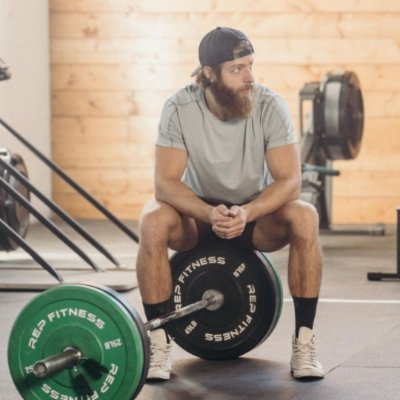As a strength coach and shoe reviewer, I spend a lot of time answering questions about deadlifts and footwear and sometimes even deadlifting with or without footwear.
There are benefits to deadlifting without shoes but that doesn’t come without some drawbacks. Luckily, we live in a time where there are a lot of great shoes for deadlifting, however, I know some lifters (myself included) love pulling barefoot.
If you’ve been mulling around the idea of why lifters deadlift without shoes and if it’s for you, I’m going to cover three main benefits behind why they do so and three drawbacks to keep in mind if you want to try it.
Benefits of Deadlifting Without Shoes
Benefit 1: Improved Stability and Ground Connection
In the context of deadlifting and footwear stability comes in two forms. There’s the physical component that entails how stable you feel due to the footwear you’re using or not using if you’re deadlifting barefoot.
Outside of the physical component regarding stability, there’s also the proprioceptive side of things. Proprioception is our body’s ability to sense its position in space and time.
Think about the last time you tripped and fell and magically caught yourself or positioned yourself mid-fall to mitigate damage. This is proprioception at its fine AKA our body’s ability to sense its surroundings and create physical outcomes.
The bottoms of our feet are rich with proprioceptive nerve endings. This is why walking barefoot can feel like “so much” sometimes if you’re not used to it.
Barefoot lifting provides a lot of sensory feedback which can help lifters better feel the ground below them. In doing so, you can typically get an added benefit of better-activating muscles used and needed for completing the task at hand, deadlift reps.
This is why deadlifting in shoes with thick midsoles like running shoes can be sub-optimal. You’re not only losing out on the physical component of feeling stable but you’re also taking away from your body’s ability to “feel” the ground to better activate muscles.
Before you stress your deadlift shoes, it’s a good idea to fully understand and master this exercise first. Make sure you check out my deadlift guide which has detailed a video and how-to explaining this exercise.
Benefit 2: More Potential for Better Force Transfer
Another lesser talked-about benefit of deadlifting without shoes is how you can typically produce more force either barefoot or with a super thin pair of barefoot shoes when pulling big weights.
The force-time curve represents the relationship between force application and the time it takes to apply that force. In the context of deadlifting without shoes, this can affected by compressible shoe soles.
The direct ground contact from barefoot lifting minimizes energy dissipation and ensures maximal force application. Plus, it will take more effort and energy to stabilize and drive the feet into the floor if you’re pulling and shaking due to thicker midsole shoes.
The less time it takes to produce force into the ground the better especially when it comes to working with higher intensities where you may not have all of the time and effort in the world to finish reps.
Benefit 3: Decreased Range of Motion
Deadlifting without shoes or when wearing barefoot shoes can also be great for helping you cut down on the range of motion required to complete reps.
Think about it this way, if you’re lifting on a shoe with an inch-high stack height (stack height is the amount of material that separates the foot from the floor), then that’s an extra inch you need to lift the weight.
That may not seem like a lot, however, this “one inch” can be sub-optimal from two different points of view. First, there’s the point of view that you’ll have to produce more energy and effort if you’re having to lift deadlifts higher.
When you’re pulling heavy singles, doubles, and triples, the name of the game is mechanically efficient. Adding a preventable range of motion can add more work to sets without a ton of benefit.
Second, there’s the component of how certain shoes can change your deadlift mechanics and not necessarily for the better. For example, if you’re deadlifting with a shoe with heel elevation then you may be putting yourself into sub-optimal positions.
This heel elevation will push your knees forward more which will then change your deadlift setup which can negatively impact how your lower body and hips sequence themselves. For example, this is why you don’t want to deadlift in weightlifting shoes.
There are multiple layers to the above regarding deadlift mechanics and footwear, but in short, typically you’ll be better off deadlifting with flat or flatter shoes versus shoes with high heel-to-toe drops and thick midsoles.
Drawback of Deadlifting Barefoot
Drawback 1: Your Gym’s Policy May Not Allow It
I don’t know about you, but I’ve been told to put my shoes on a handful of times in bigger commercial gyms. Granted, this was much earlier on in my powerlifting career before I wore things like barefoot shoes, but we’ve probably all been there.
All that said, some gyms will frown upon you deadlifting without shoes on. This typically revolves around hygiene and liability. The hygiene element can come from either the gym’s policy or the complaints other members can make about this.
There’s also the component of liability for the gym. If you get injured working out without shoes and blame the gym and they don’t enforce their policy which states you need shoes then they can get in more problematic situations.
On top of this, if you’re deadlifting without shoes you don’t even have a thin layer of protection on the feet if you drop anything on them. Sure, a shoe isn’t going to completely stop a 45 lb plate but it will at least help mitigate some damage.
Drawback 2: May Not Be the Best for Flatter Feet
Our feet vary a lot regarding how they’re structured. If you need additional arch support for whatever reason then shoes can be more beneficial than deadlifting completely barefoot.
For example, let’s say it is uncomfortable for someone with flatter arches to deadlift barefoot but feel better and more stable with a shoe like the Adidas The Total with a little more support.
Keep in mind, that this topic is multifactorial and I think it can be beneficial to training barefoot, however, we have to remember that different anatomies and lifting thresholds exist and we should progress to training barefoot at our speeds based on what we need.
Drawback 3: Barefoot Feet Can Slip Sometimes
Another drawback to deadlifting without shoes that is a little rarer is that traction issues can arise in certain settings. More specifically, if you’re working out on sweaty rubber gym floors or wooden platforms then slip issues can be more prevalent.
The above is especially true for those who pull sumo and put a lot of pressure on the lateral parts of their feet when they’re spreading the floor during their reps.
I think the main context in which I’ve seen lifters slip when training is when they’re doing a CrossFit WOD or a higher-intensity pull that is moving slower.
In the CrossFit context, it’s the fast-paced reps that can create slip issues when barefoot because you’ll typically see the feet more active in this set and rep style. For the heavier context, it’s the slowness of the rep and the need for additional force that can be problematic.
Frequently Asked Questions (FAQ)
Q:Should you deadlift without shoes?
Q:Is deadlifting without shoes safe?
Takeaway Thoughts
There are a range of benefits that come with deadlifting barefoot, however, that’s not without some drawbacks, too. Will deadlifting barefoot be for everyone? No, and that’s why it’s important to remember both sides of the coin.
As you get more familiar with deadlifts it’s normal to find yourself building preferences when it comes to deadlifting with or without shoes.
If you have additional questions about this article, drop a comment below or reach out to me personally via Instagram (@jake_boly or @that_fit_friend).
















Add a Comment